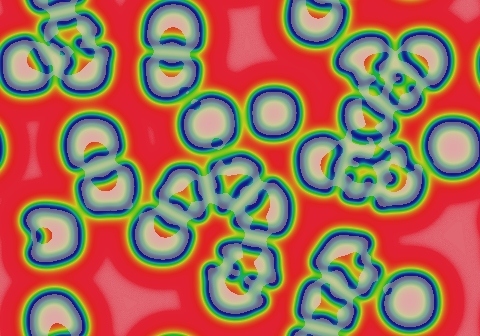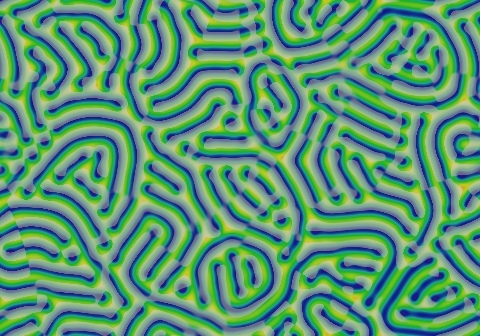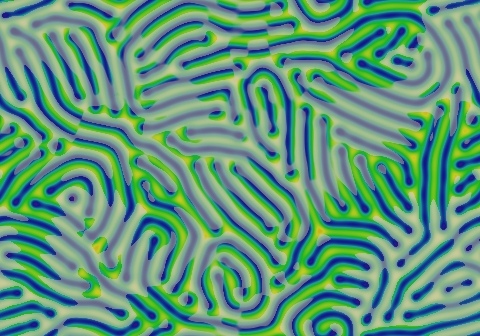Gray-Scott Model at F 0.0300, k 0.0590
These images and movie demonstrate the behavior of the Gray-Scott reaction-diffusion system with σ=Du/Dv=2 and parameters F=0.0300, k=0.0590.
Rings grow symmetrically, and break quickly into worms when deformed. Worms and a few solitons fill the space within 2500 tu. Coherent oscillation with a period of about 166 tu (seen in the {du}/{dt} component) develops by 20,000 tu and oscillations fill the field by 40,000 tu. Pattern evoloves very slowly toward longer, more parallel lines, with solitons present at grain boundaries and junctions for well over 500,000 tu.
Categories: Pearson γ; Wolfram 2-a (glossary of terms)
 increase F increase F
 | |||
 decrease k  |


|
15 frames/sec.; each fr. is 47 iter. steps = 23.5 tu; 1800 fr. total (42,300 tu) |  increase k 
|

|


| ||
 decrease F decrease F
 |
In these images:
- Color indicates level of u, ranging from purple (lowest u values) through blue, aqua, green, yellow and pink/red (highest u values)
- Areas where u is increasing are lightened to a light pastel tone; where u is decreasing the color is vivid.
- In areas where u is changing by less than ±3×10-6 per tu, an intermediate pastel color is seen. This includes areas that are in steady state or equilibrium.
''tu'' is the dimensionless unit of time, and ''lu'' the dimensionless unit of length, implicit in the equations that define the reaction-diffusion model. The grids for these simulations use Δx=1/143 lu and Δt=1/2 tu; the system is 3.2 lu wide. The simulation meets itself at the edges (periodic boundary condition); all images tile seamlessly if used as wallpaper.
Go back to Gray-Scott pattern index
This page was written in the "embarrassingly readable" markup language RHTF, and was last updated on 2015 Nov 07.
 s.27
s.27